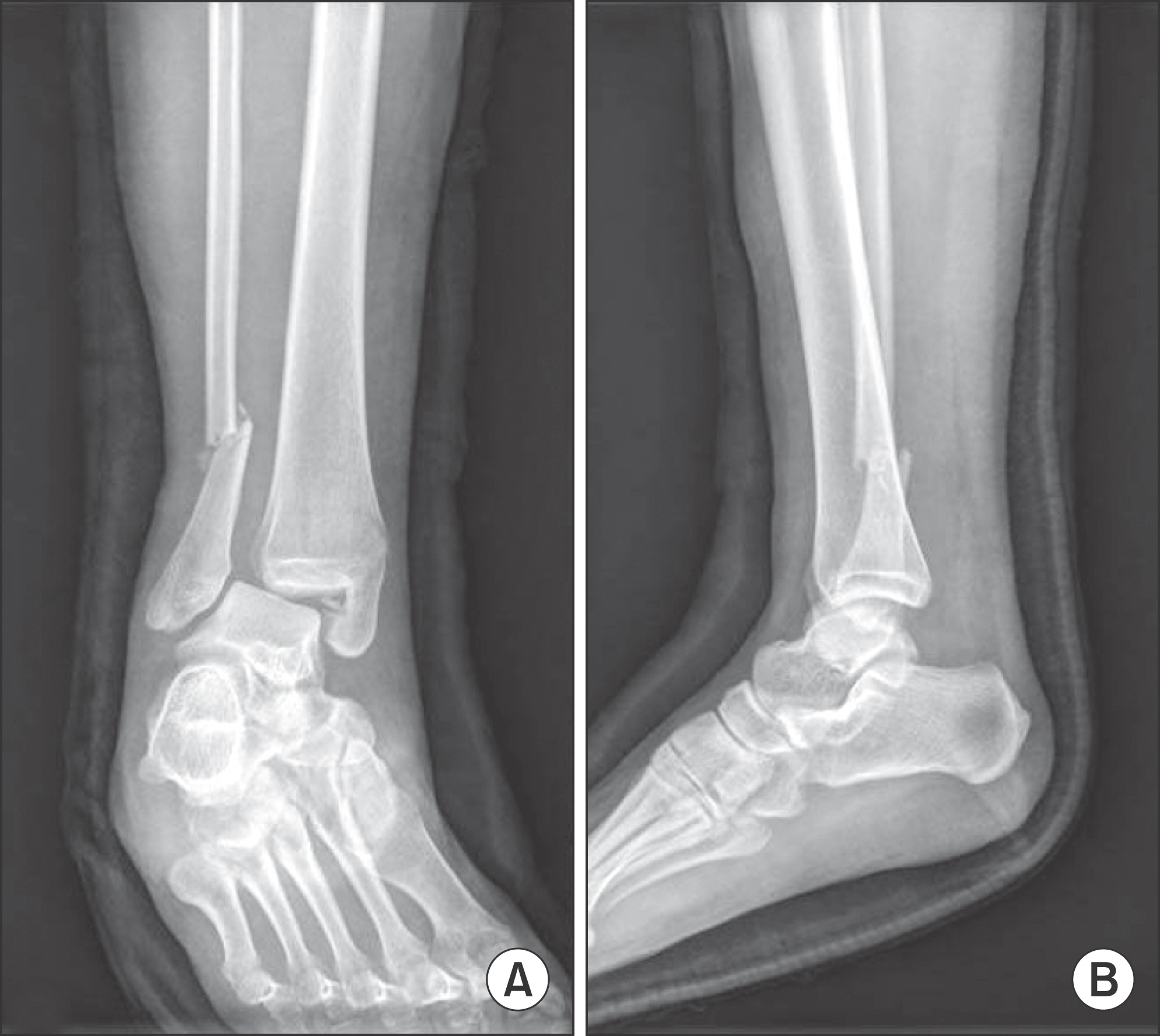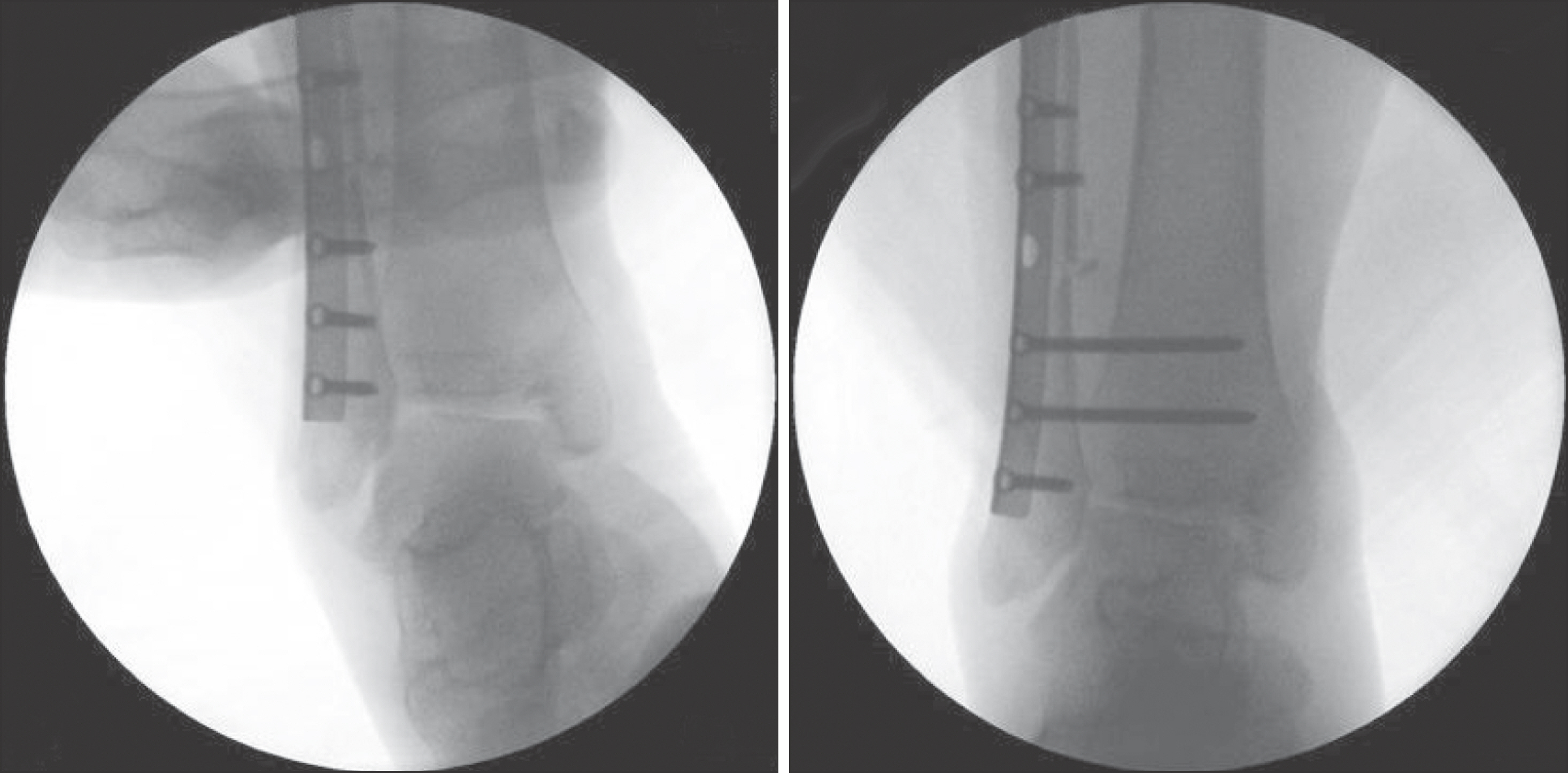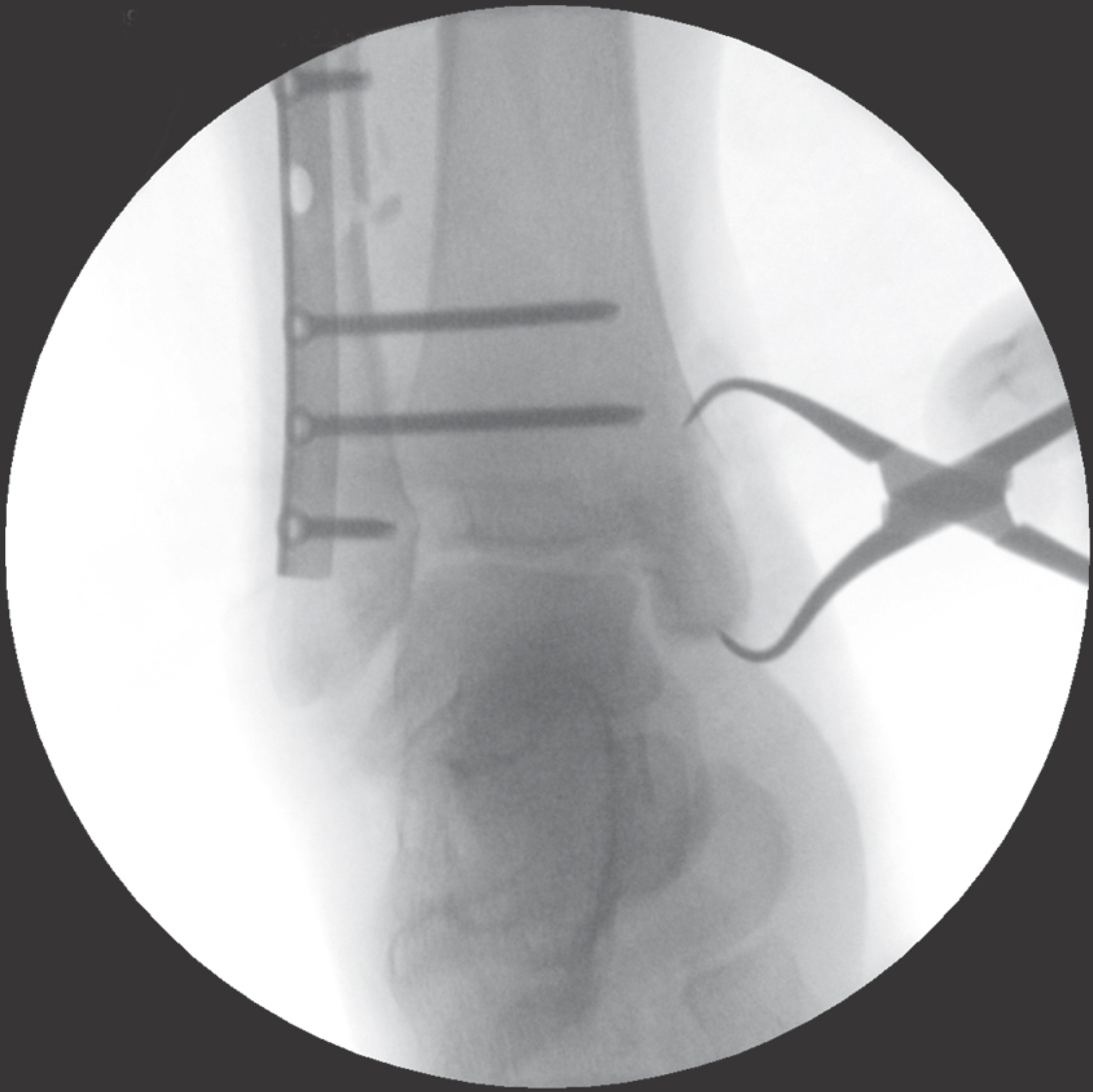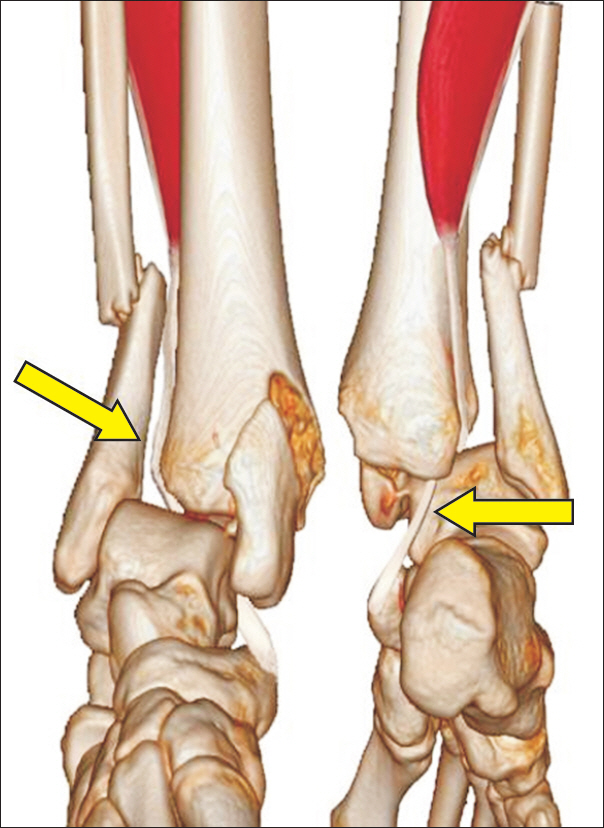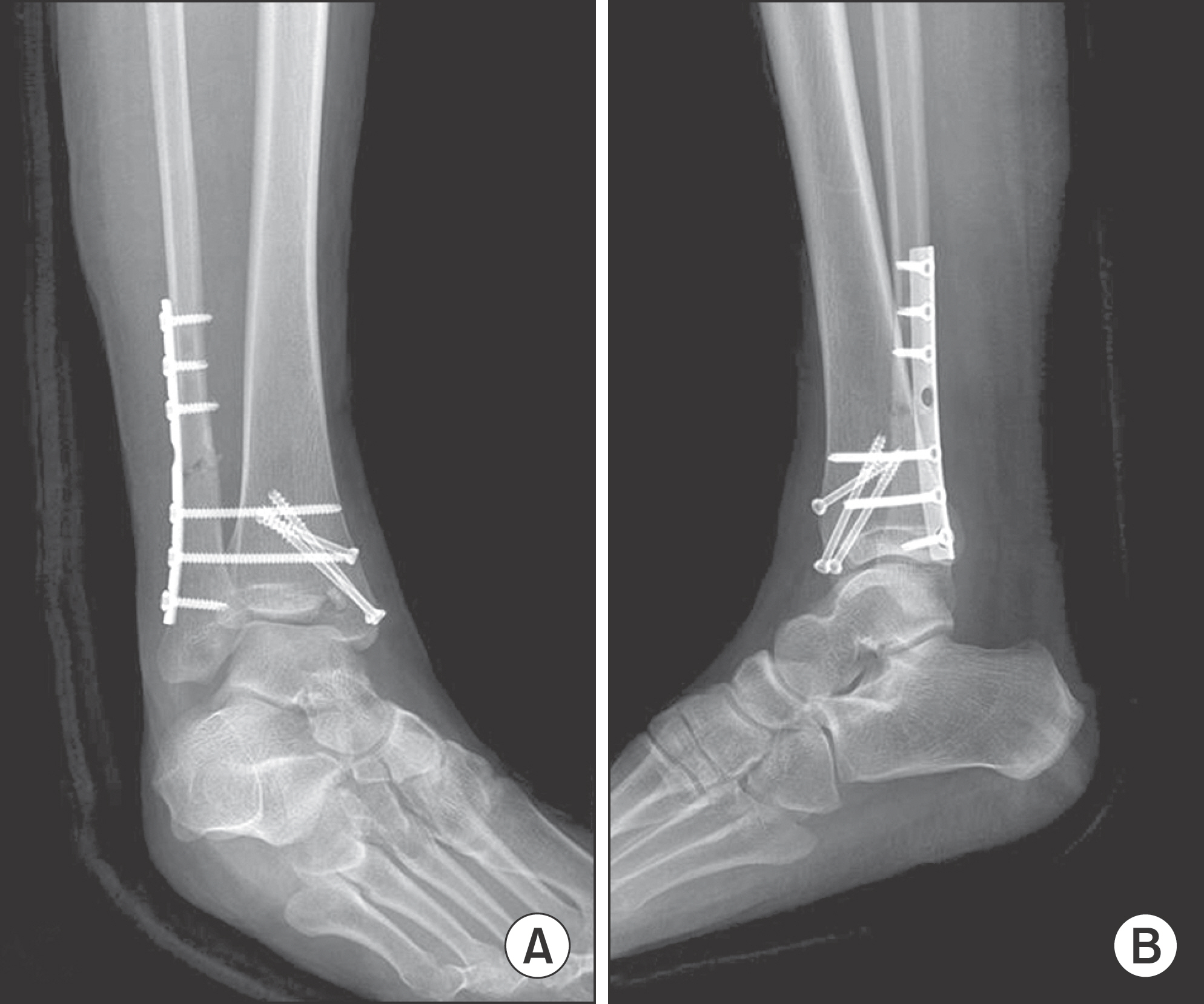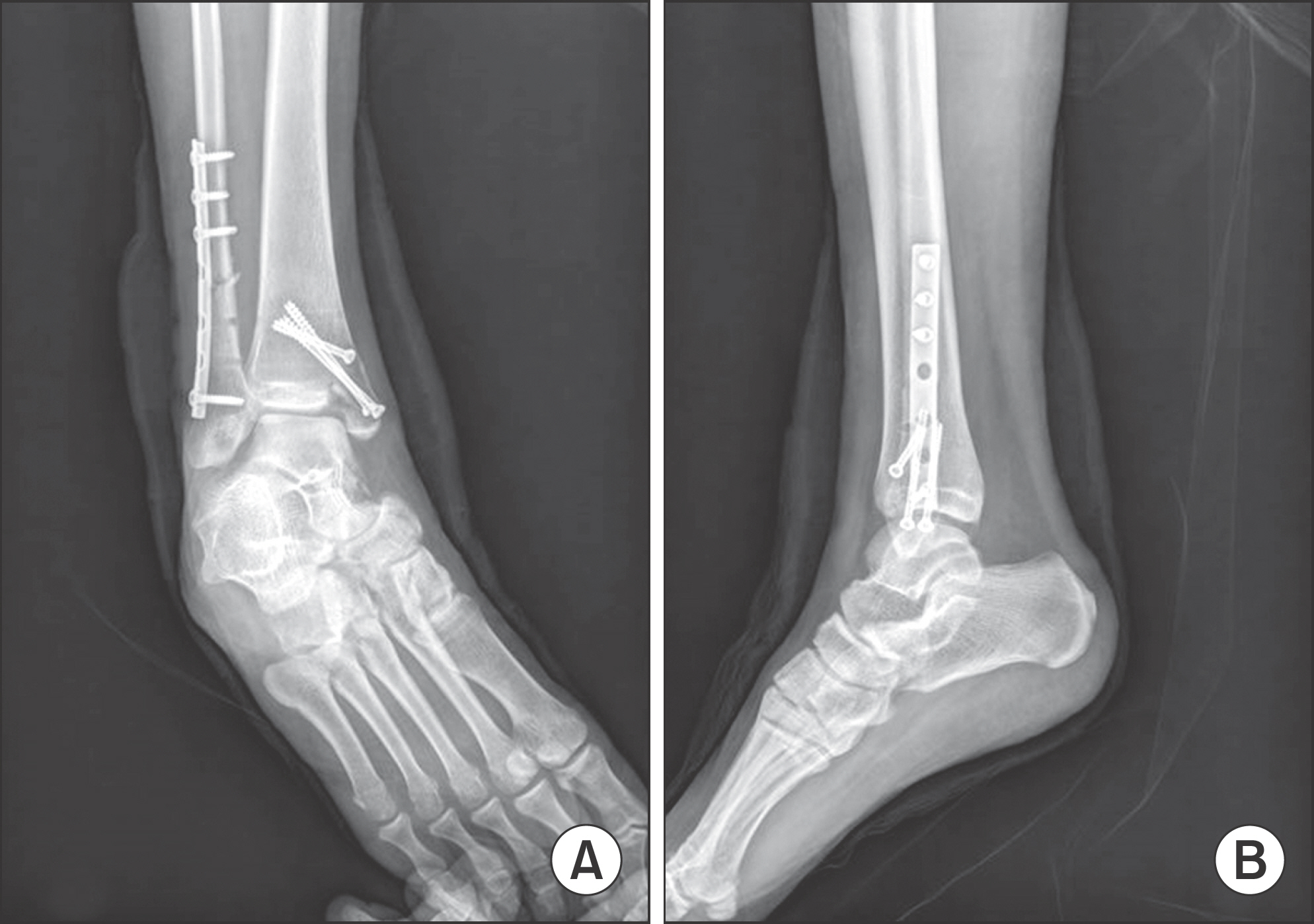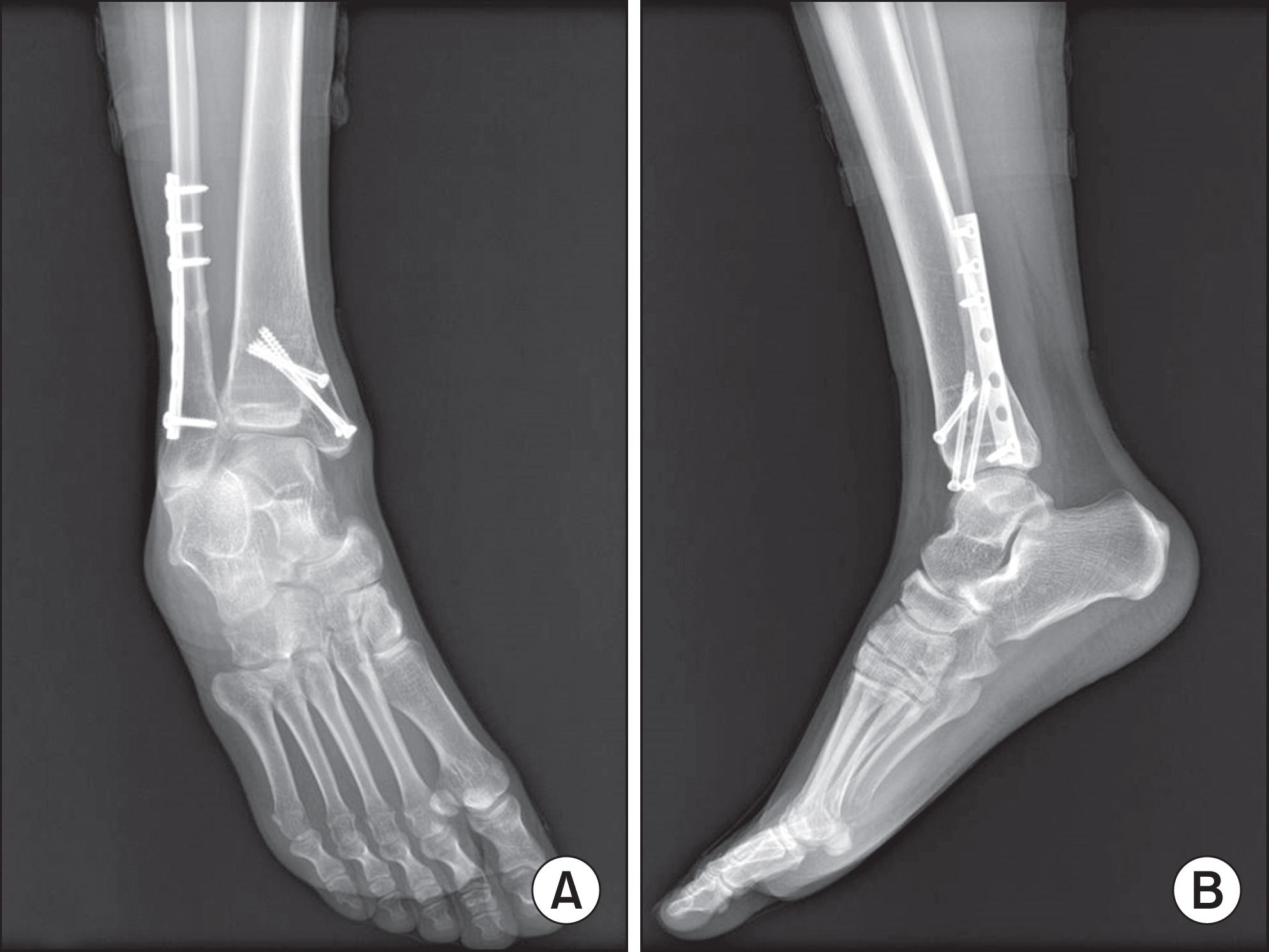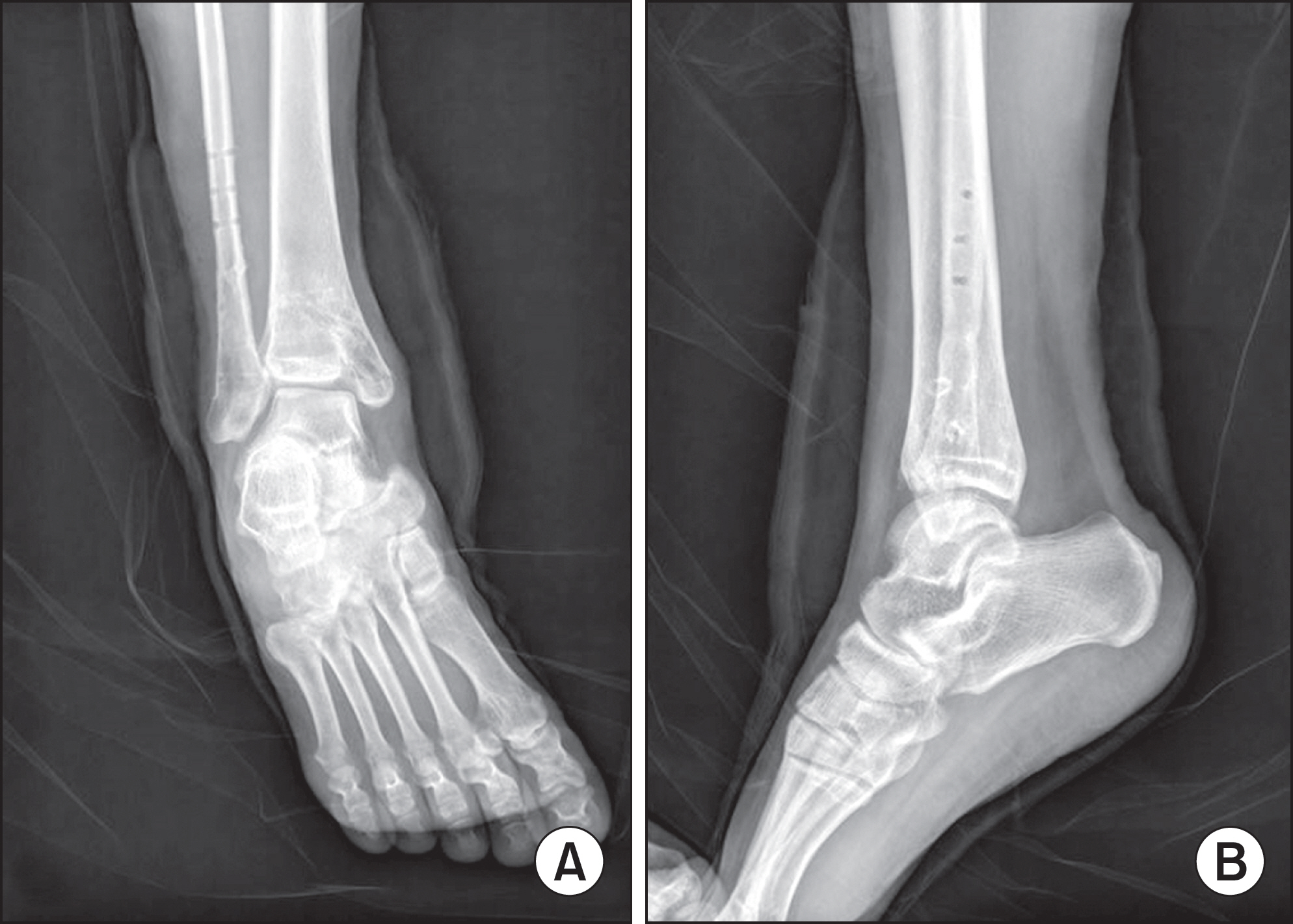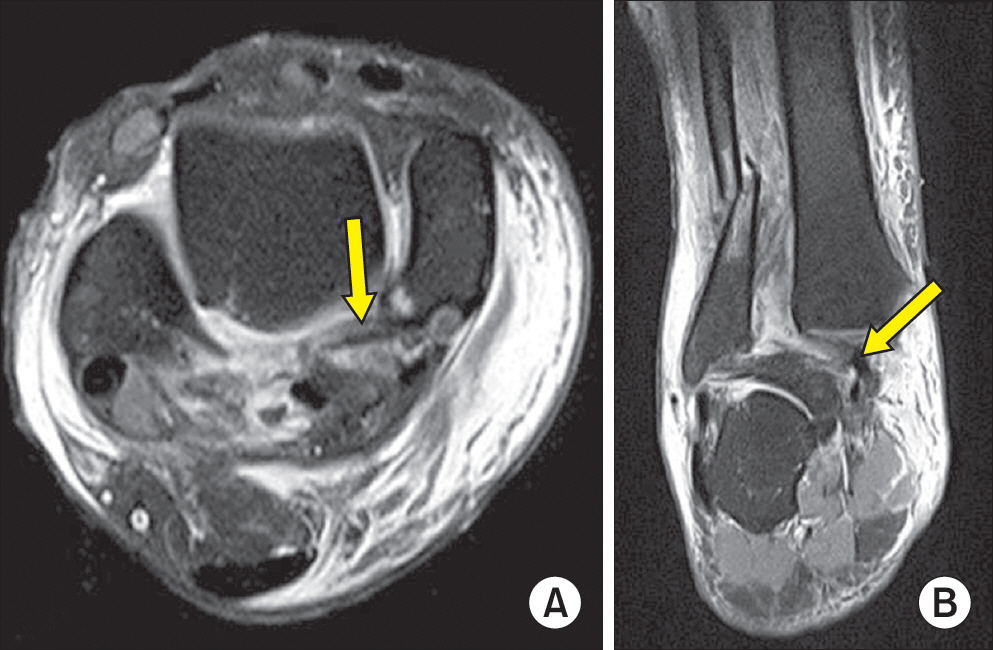J Korean Foot Ankle Soc.
2017 Jun;21(2):70-74. 10.14193/jkfas.2017.21.2.70.
A Irreducible Ankle Fracture and Dislocation Due to Injured Tibialis Posterior Tendon Interposition: A Case Report
- Affiliations
-
- 1Department of Orthopaedic Surgery, Chosun University School of Medicine, Gwangju, Korea. leejy88@chosun.ac.kr
- KMID: 2382428
- DOI: http://doi.org/10.14193/jkfas.2017.21.2.70
Abstract
- Fractures and fracture-dislocations of the ankle are caused by a variety of mechanisms. In addition to fractures, injuries of soft tissue, such as ligaments, tendons, nerves, and muscles may also occur. Among these, a tibialis posterior tendon injury is difficult to be identified due to swelling and pain at the fracture site. It is difficult to observe tibialis posterior tendon injury on a simple radiograph; it is usually found during surgery by accident. There are some studies regarding irreducible ankle fracture-dislocations due to interposition of the tibialis posterior tendon; however, to the best of our knowledge, there has not been any report about interposition of injured tibialis posterior tendon. Herein, we report a case of an irreducible fracture-dislocation of the ankle due to injured tibialis posterior tendon interposition that was observed intraoperatively, interrupting the reduction of ankle fracture-dislocation. We obtained satisfactory clinical result after reduction of the trapped tendon, fracture reduction, and internal fixation; therefore, we are willing to report this case with the consent of the patient. This study was conducted with an approval from the local Institutional Ethics Review Board.
MeSH Terms
Figure
Reference
-
1.Ermis MN., Yagmurlu MF., Kilinc AS., Karakas ES. Irreducible fracture dislocation of the ankle caused by tibialis posterior tendon interposition. J Foot Ankle Surg. 2010. 49:111–71.
Article2.Lacasse JS., Laflamme M., Penner MJ. Irreducible fracture-dislocation of the ankle associated with interposition of the tibialis posterior tendon in the syndesmosis: a case report. J Foot Ankle Surg. 2015. 54:912–1.3.Jarvis HC., Cannada LK. Acute tibialis posterior tendon rupture associated with a distal tibial fracture. Orthopedics. 2012. 35:e595–7.
Article4.Walker RH., Farris C. Irreducible fracture-dislocations of the ankle associated with interposition of the tibialis posterior tendon: case report and review of the literature of a specific ankle fracture syndrome. Clin Orthop Relat Res. 1981. 110:212–1.5.Hunter AM., Bowlin C. Posterior tibial tendon entrapment within an intact ankle mortise: a case report. J Foot Ankle Surg. 2015. 54:111–9.
Article6.Giblin MM. Ruptured tibialis posterior tendon associated with a closed medial malleolar fracture. Aust N Z J Surg. 1980. 50:59–10.
Article7.West MA., Sangani C., Toh E. Tibialis posterior tendon rupture associated with a closed medial malleolar fracture: a case report and review of the literature. J Foot Ankle Surg. 2010. 49:515. .e9-12.
Article8.Coonrad RW., Bugg EI Jr. Trapping of the posterior tibial tendon and interposition of soft tissue in severe fractures about the ankle joint. J Bone Joint Surg Am. 1954. 31:744–50.
Article9.Cunningham DJ., Romanes GJ. Cunningham’s textbook of anatomy. 12th ed.London: Oxford University Press;1981.10.Holmes GB Jr., Mann RA. Possible epidemiological factors associated with rupture of the posterior tibial tendon. Foot Ankle. 1992. 13:70–9.
Article
- Full Text Links
- Actions
-
Cited
- CITED
-
- Close
- Share
- Similar articles
-
- Irreducible Ankle Fracture Dislocation due to Dislocated Tibialis Posterior Tendon - A Case Report -
- Failure of Reduction for Ankle Fracture-Dislocation Caused by Tibialis Posterior Tendon Interposition: A Case Report
- Irreducible Ankle Fractures by Locked Posterior Malleolar Fragment: Case Report
- Fracture Dislocation of the interphalangeal Joint of Great Toe: Report of Three Cases
- Irreducible Anterior Subluxation of the Ankle Joint Caused by Os Trigonum and Transverse Ligament: A Case Report


